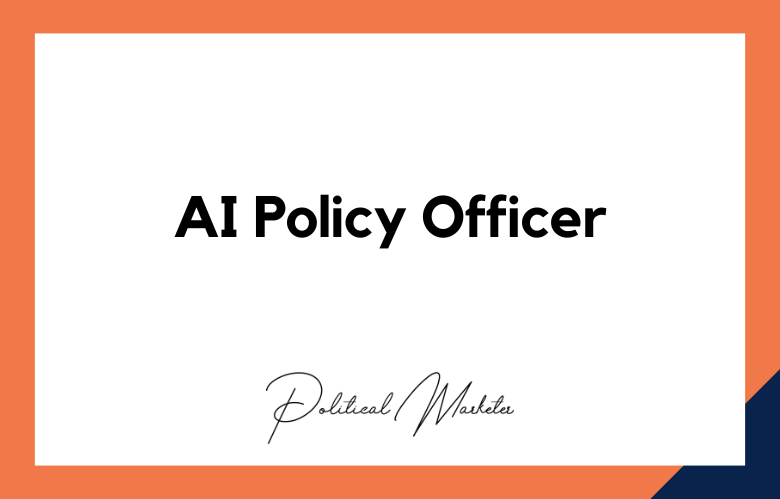We live in an age where politics is becoming more polarizing daily. With all the noise and chaos, it can be hard to feel like you have a voice in the decisions that affect your community and country.
That’s where political advocacy comes in – the act of actively influencing the decisions of policymakers and elected officials.
But with so much information, how can you be an effective advocate? We’ll discuss five tips for making your message heard and creating real change.
What is Effective Political Advocacy?
Political advocacy has become a crucial aspect of modern society. Advocacy campaigns have helped shape policies and create positive change for communities worldwide.
But what is effective political advocacy? What does it entail, and how can one become an effective political advocate?
We’ll explore the importance of advocacy in today’s world, the characteristics of an influential political advocate, and how to implement strategies to create change effectively.
Effective political advocacy requires a clear understanding of the issues, a thorough knowledge of the political landscape, and a willingness to collaborate with others.
Advocates must identify and articulate the problems they seek to address. They must then build support through education efforts and outreach programs.
This may include mobilizing communities via social media and organizing events and coalitions to encourage policymakers to adopt their positions.
Effective political advocates must be committed to the cause, collaborate with colleagues, and be flexible.
Understanding Effective Political Advocacy
Politics plays a vital role in shaping our lives. It determines how we live, work, and interact with the world around us. Political advocacy influences public policy decisions made by elected officials or other decision-makers.
Effective political advocacy requires understanding how the political system works and navigating it to achieve desired outcomes.
I will explore what constitutes effective political advocacy and provide some tips on becoming a more effective advocate.
Best Practices for Effective Political Advocacy
Identify your issue and critical players.
The first step to effective advocacy is identifying the issue you’re passionate about and the people who can decide.
This could be a local issue like saving your neighborhood park or a national issue like healthcare reform.
Once you’ve identified your issue, research and discover the key players – elected officials, policymakers, community leaders, or anyone with a say.
Make your message clear and concise.
Once you know your issue and key players, it’s time to craft your message. The key here is to keep it simple and to the point. Your notice should be clear, concise, and memorable.
Are you advocating for gun control? State your main point passionately and succinctly, using statistics to emphasize the issue.
“Over 30,000 Americans die every year from gun violence. It’s time for our elected officials to take action and enact policies to keep our communities safe.”
Build relationships.
Advocacy is ultimately about building relationships – with policymakers, community leaders, and other advocates.
Take the time to build relationships with the people who have the power to make change. Attend town hall meetings, request meetings with elected officials, and connect with like-minded individuals and organizations.
The more you can build relationships and create a support network, the more effective your activism will be.
Use all available channels.
Effective advocacy involves using all available channels to get your message out. This can include social media, letters to the editor, community meetings, and more.
Think creatively about getting your message out there, and ensure you use all the available tools.
Stay persistent.
The final key to effective advocacy is persistence. Change doesn’t happen overnight, and even the most compelling arguments can take time to make an impact.
It’s essential to stay motivated and keep going, even when progress is slow. Remember that advocacy is a marathon, not a sprint, and every step in the right direction is a victory.
Tips and Strategies to Make Your Voice Heard
Know your issue:
The first and foremost step in any political advocacy campaign is understanding the issue you advocate for.
Gathering information and data about an issue, whether local or national, is crucial. This helps identify the problem’s root cause and possible solutions.
Do your research, attend public meetings and forums, and talk to people working on similar issues. The more you know about your case, the better equipped you will be to advocate for change.
Know your audience:
The second important step in political advocacy is to know your audience. Identify the decision-makers who have the power to act on your issue and the stakeholders who may be affected by the decision.
This will help you tailor your message and advocate tactics to meet their needs and interests.
For example, if you advocate for a new policy, you should target the elected officials who will vote on it.
If you advocate for a social cause, you should reach out to community leaders, influencers, and like-minded individuals with a shared interest in the grounds.
Develop a clear message:
The third step in effective political advocacy is to develop a clear and concise message. Your message should be focused and straightforward, explaining what you advocate for and why it is essential.
You should articulate your message in a few sentences if you are allowed to meet a key decision-maker.
Focus on your main point and avoid getting sidetracked on unrelated issues. Use facts, examples, and data to support your argument and make a case for change – avoid relying on emotions or personal opinions only.
Use different advocacy tactics:
The next step is to decide on the best advocacy tactics to use. Advocacy tactics can vary depending on your audience and the issue you advocate for. Some common advocacy tactics include:
– Writing a letter, email, or social media message to elected officials
– Meeting with elected officials in person or via virtual meetings
– Organizing rallies, marches, or community events to raise awareness
– Engaging the media to get publicity for your issue
– Partnering with other organizations, networks, or coalitions to advance your issue
Follow-up and Follow-through:
Lastly, follow up on your advocacy efforts. This means keeping your elected officials accountable and following up with them to ensure they are taking action on your issue.
Be sure to thank them when they support your cause and hold them accountable if they do not.
Conclusion:
Advocacy is ultimately about making your voice heard and creating change. By following these tips, you can become a more effective advocate and help build a better world.
Be persistent, stay informed, build relationships, and never stop fighting for what you believe in. The future is in your hands.
Advocacy is an essential tool for promoting social change and influencing policy decisions.
You can build powerful campaigns that make a difference by understanding the principles of effective political advocacy and applying best practices like building coalitions, developing clear narratives, and building strategic relationships with legislators.
Call: +91 9848321284
Email: [email protected]
Political Advocacy: FAQs
What Is Political Advocacy?
Political advocacy influences decisions within political, economic, and social systems and institutions. It involves actions that aim to change public policy or government practices.
Why Is Political Advocacy Important In A Democracy?
It ensures citizen voices are heard, helps hold leaders accountable, and strengthens representative governance by allowing people to push for legislative or systemic change.
Who Can Participate In Political Advocacy?
Anyone, from individuals to NGOs, political action groups, students, and businesses, can participate in political advocacy to promote causes or policy changes.
How Does Political Advocacy Differ From Lobbying?
While both seek to influence decision-making, lobbying often involves direct communication with lawmakers for specific legislation, whereas advocacy includes broader public efforts like education, protests, or petitions.
What Are Common Political Advocacy Tactics?
These include social media campaigns, public rallies, email campaigns, petitions, op-eds, town halls, policy briefs, and direct outreach to legislators.
How Can Social Media Be Used For Advocacy?
Social media enables real-time communication, viral messaging, and direct access to audiences, making it a powerful tool for mobilizing supporters and influencing public opinion.
What Role Do Advocacy Groups Play In Politics?
They act as intermediaries between citizens and government, often organizing collective action, lobbying officials, educating the public, and shaping political narratives.
Can Political Advocacy Be Non-Partisan?
Yes, advocacy can focus on issues rather than political parties, such as environmental justice, education reform, or healthcare access.
What Is Grassroots Political Advocacy?
Community members drive grassroots advocacy and aim to influence public policy through local-level mobilization, public engagement, and coalition-building.
What Skills Are Essential For Effective Advocacy?
Key skills include communication, strategic planning, public speaking, networking, research, and understanding policy-making processes.
Is Political Advocacy Legal?
Yes, advocacy is protected under free speech and democratic rights. However, it must comply with local regulations, especially involving funding, lobbying, or election-related efforts.
How Can Politicians Respond To Advocacy Efforts?
They may respond by proposing legislation, modifying existing policies, engaging with advocacy leaders, or addressing public concerns through speeches and debates.
What Is Digital Political Advocacy?
This refers to using digital tools like websites, email lists, and social platforms to mobilize support, spread awareness, and influence public policy remotely and efficiently.
How Do You Measure The Impact Of Political Advocacy?
Policy change, media coverage, public engagement levels, petition signatures, and political discourse or opinion shifts often measure the impact.
What Is The Role Of Data In Advocacy Campaigns?
Data helps identify target audiences, track engagement, refine messaging, and evaluate the success of advocacy initiatives.
How Do You Build A Successful Advocacy Campaign?
Start with clear goals, identify your audience, craft persuasive messages, use multiple channels, form alliances, and continuously evaluate progress.
What Are Advocacy Coalitions?
These are alliances of individuals or organizations working together on shared advocacy goals to amplify impact and influence.
Can Advocacy Backfire Politically?
It may alienate supporters, provoke a backlash, or result in policy setbacks if poorly executed. Messaging and timing are critical.
What Is The Difference Between Direct And Indirect Advocacy?
Direct advocacy involves face-to-face or direct communication with decision-makers, while indirect advocacy targets the public to pressure leaders via mass mobilization.
How Can Young People Get Involved In Political Advocacy?
They can join student movements, start awareness campaigns, engage on social media, participate in civic forums, or volunteer for advocacy organizations.










